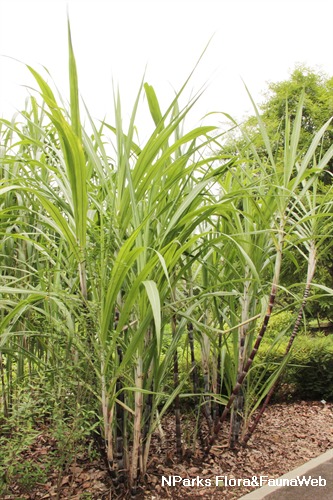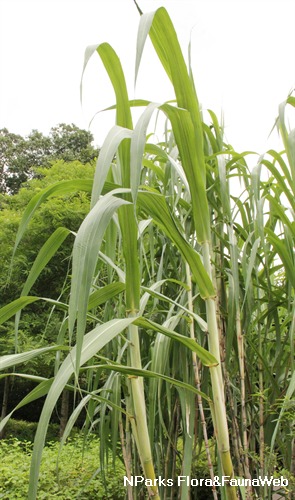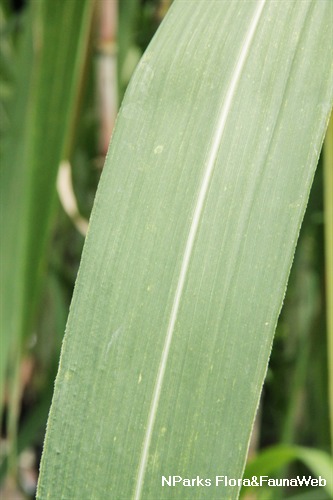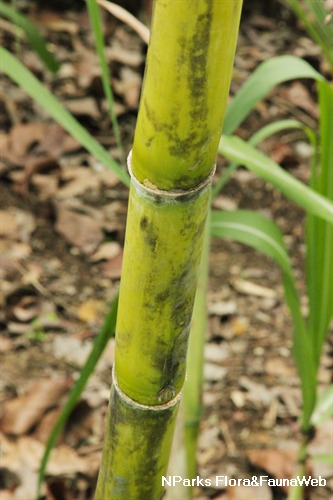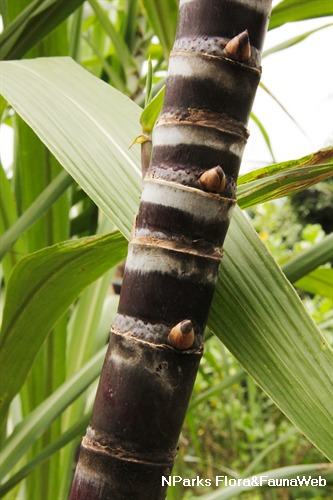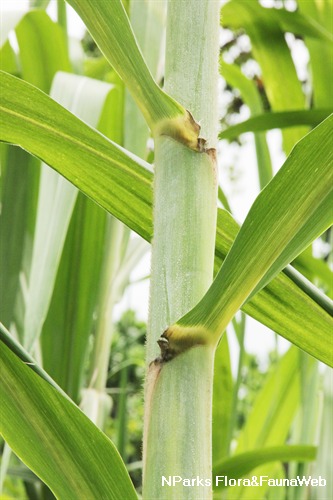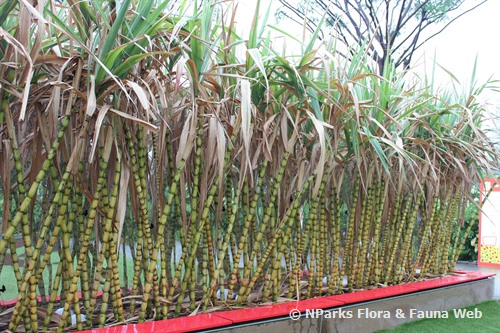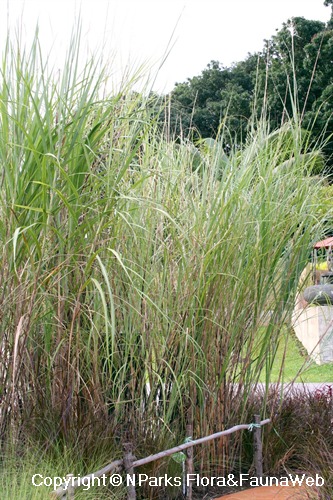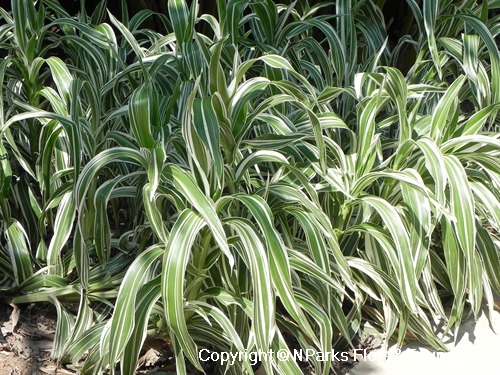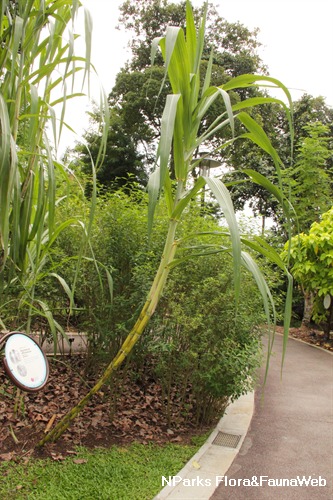
Name
Classifications and Characteristics
| Plant Division | Angiosperms (Flowering Seed Plants) (Monocotyledon) |
|---|---|
| Plant Growth Form | Grass or Grass-like Plant (Tall Grass (Poaceae)) |
| Mode of Nutrition | Autotrophic |
| Plant Shape | Grassy |
Biogeography
| Native Distribution | Tropical south-eastern Asia |
|---|---|
| Local Conservation Status | Non-native (Spontaneous (Casual)) |
Description and Ethnobotany
| Growth Form | Tall clumping grass which can grow up to 6 m tall. |
|---|---|
| Foliage | Leaves are arching and linear or lanceolate (about 70 – 150 cm long, 3 – 6 cm wide). Leaves are large with conspicuous mid rib and sharply toothed leaf margin. Leaf sheath is loose mostly glabrous while being slightly hairy at the mouth. Ligule possesses small hairs too. |
| Stems | Stems occur in culms and are about 3 – 6 m tall, 20 – 45 mm in diameter. Culms are solid, juicy, and high in sugar content. Culms are jointed at nodes and have about 20 – 40 nodes. Internodes are often swollen and coloured. |
| Flowers | Flowers are plume-like and usually whitish grey. Panicle is large (50 – 100 cm long), often hairless but pilose at nodes. |
| Fruit | Seed is oblong and small (about 1.5 mm long). |
| Cultivation | Sugarcane requires a lot of watering. It is propagated via stem cutting and prefers to be grown in moist soil. It tolerates slight sloping land. |
| Etymology | Genus epithet 'Saccharum' derived from Greek term 'saccharon' (sugar or sweet juice), a reference to the sugarcane genus. |
| Ethnobotanical Uses | Food (Fruit or Vegetable): Source of sugar. Extracted juice from the tissues are processed and refined as sugar cubes, made into syrup and icing sugar. Others: Saccharum officinarum have many uses. The culms are used for food, medicine, alcohol production, biofuel, wax, hair removal and more. The reeds are used to make mats and thatch. Sugar is extracted from the soft tissue of the culms. Sugarcane that is planted for production of sugar is often not single species plant but a complex hybrid of several different species. |
Landscaping Features
| Landscaping | It is usually grown as an annual for sugar and molasses. |
|---|---|
| Landscape Uses | Parks & Gardens |
| Plant & Rootzone Preference or Tolerance Remarks | It is tolerant to occasional waterlogging, and slight sloping. |
Plant Care and Propagation
| Light Preference | Full Sun |
|---|---|
| Water Preference | Moderate Water, Lots of Water |
| Plant Growth Rate | Fast |
| Rootzone Tolerance | Moist Soils, Well-Drained Soils |
| Potential Problems | Moth caterpillars, borers, beetles. |
| Diseases | Rot, and red stripe diseases. |
| Propagation Method | Stem Cutting |
Foliar
| Foliage Retention | Evergreen |
|---|---|
| Mature Foliage Colour(s) | Green |
| Foliar Type | Simple / Unifoliate |
| Foliar Arrangement Along Stem | Alternate |
| Foliar Shape(s) | Non-Palm Foliage (Lanceolate) |
| Foliar Venation | Parallel |
| Leaf Area Index (LAI) for Green Plot Ratio | 3.5 (Shrub & Groundcover - Monocot) |
Floral (Angiosperm)
| Flower Grouping | Cluster / Inflorescence |
|---|---|
| Flower Location | Terminal |
| Inflorescence Type | Panicle |
| Flowering Period | Rarely |
Image Repository
Others
| Master ID | 1118 |
|---|---|
| Species ID | 2411 |
| Flora Disclaimer | The information in this website has been compiled from reliable sources, such as reference works on medicinal plants. It is not a substitute for medical advice or treatment and NParks does not purport to provide any medical advice. Readers should always consult his/her physician before using or consuming a plant for medicinal purposes. |

